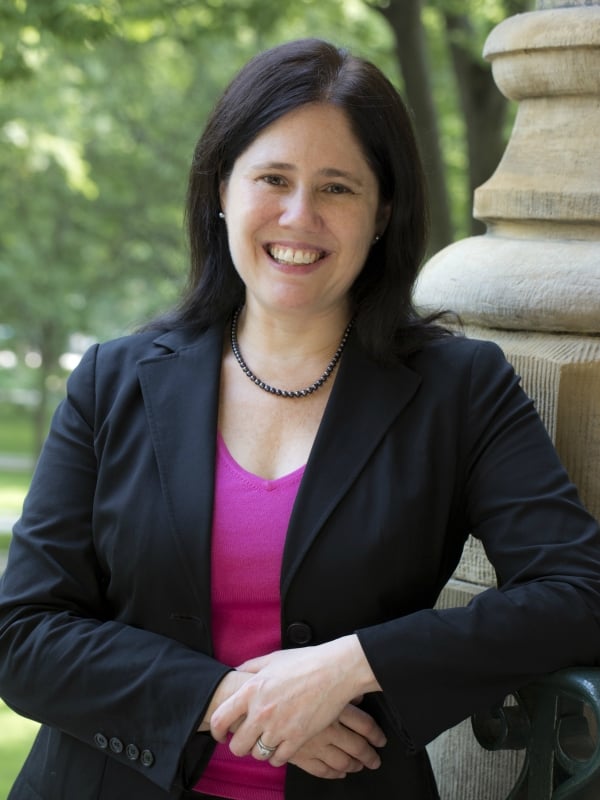You have /5 articles left.
Sign up for a free account or log in.
The University of Pennsylvania recently announced the creation of the Center for Excellence in Teaching, Learning, and Innovation (CETLI). This new Center is the result of a merger between the Center for Teaching and Learning (CTL) and the Online Learning Initiative (OLI). I reached out to Penn’s deputy provost, Beth Winkelstein, to get the story on the rationale and goals for this newly merged Center. Beth graciously agreed to answer my questions.

Q: What was the rationale for merging your existing CTL and OLI groups into the new CETLI?
A: Education everywhere, and here at Penn, is very dynamic. How and what we teach, the ways our students learn, who our students are, these are all evolving. And this merger not only responds to that but signals our push not just to meet these challenges but to innovate and lead in doing so.
In just the span of our current senior undergraduates’ experiences, those of us who teach and support learning have had to repeatedly think anew about how we educate our students amidst a pandemic, Zoom classes and remote teaching, the reminder of the need for racial inclusion and equity in our courses, difficulties re-engaging students in person, the emergence of generative AI and struggles to support open inquiry in our classes. These past four years have been a dramatic reminder of the new challenges and opportunities in education.
The creation of the Center for Excellence in Teaching, Learning and Innovation (CETLI), merging our long-standing Center for Teaching and Learning (CTL) and Penn’s Online Learning Initiative (OLI) has already been better meeting those continually changing challenges and opportunities, and is positioning our instructors and programs to do so in the future.
As excited as we are about CETLI’s forward-looking focus, we have also sent a clear message to our community that “nothing either center did will go away.” So CETLI will continue to support instructors in defining and realizing their teaching aims. The center will continue to bolster the people, processes and technological infrastructure needed to make possible outstanding teaching, including online teaching. And the center will continue to foster a culture of inclusive and excellent teaching.
By merging the two groups, though, CETLI can do more than either did alone. It can better help lead Penn through an evolving educational landscape and advance teaching initiatives informed by changes to our student body, pedagogy and technology. Combined, the center can better respond to the reality that pedagogy and technology, while not always, are often entwined. The combined center will offer improved support connecting the pedagogical and the digital, working both with instructors and with school-based staff to help make sure Penn’s instructional technology systems best meet our needs and our aspirations. As a single organization, CETLI will also more seamlessly center considerations of teaching in discussions of new digital initiatives, with instructional design support for those initiatives. We’ve heard lots of excitement across campus about not just what CETLI can do to support our programs but how it will help Penn lead in excellent teaching.
Q: We know mergers of previously distinct campus organizations can be challenging. What challenges have the teams faced in coming together, and what has been the process CETLI has been going through to build an integrated set of organizational norms and culture?
A: It’s important to call out that there was already strong collaboration between the teams, so, in many ways, this was more a formality than the actuality. In fact, the teams have been literally and figuratively working together for years. We colocated both offices in 2017 and hired a joint staff member in the area of instructional design and technology.
Further, the Executive Director of CTL was a member of the OLI’s Faculty Advisory Committee and the two Executive Directors have years of very successful and collaborative partnership working together. Indeed, their mutual respect of each other and their teams not only helped us during the COVID pandemic but in all that each group does beyond that.
In the merger process, the two units very intentionally brought the teams together to create a new mission statement and a set of guiding practices. This was both about creating a shared understanding of the work they do and about working together across the old units.
The new center continues to make regular space for the whole team to connect, both formally and informally. In doing this, we worked with an external consultant to help us think through the process, ensure a forward-looking vision, and also in order to be as inclusive and respectful as possible.
New positions created through the merger also created new opportunities for cross-unit engagement and collaboration and also brought new energy to the unit overall. And, the teams are amazing both in their work and their care and dedication.
Q: How does Penn’s online learning portfolio advance learning for the University’s residential (in-person) educational programs?
A: Any opportunity to reflect on teaching improves teaching. Teaching online, whether for credit or for life-long learning programs (e.g., MOOCs), requires deep reflection on teaching goals, best practices and methodologies. That in itself improves teaching.
Most of our online courses are developed with the help of instructional design support. Working closely with these professionals develops good pedagogical habits that then extend into the classroom, and that have begun to permeate our residential programs as well.








